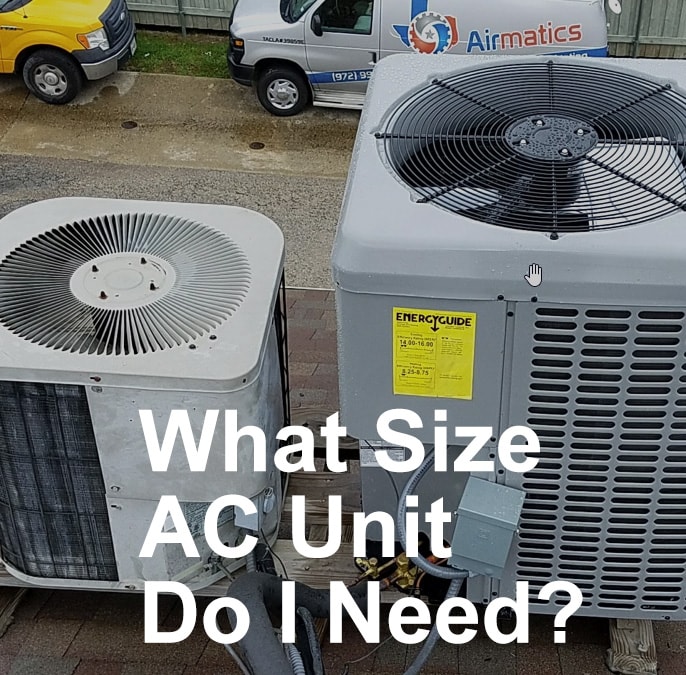
Determining what size AC unit do I need is essential for comfort, efficiency, and cost savings. The size of an air conditioner is measured in BTUs, and it depends on factors such as the size and layout of your space, insulation quality, and local climate. This article will guide you through these factors to help you choose the right AC unit for your home.
Key Takeaways
- Proper air conditioner sizing is crucial for achieving optimal comfort, energy efficiency, and reducing utility costs.
- Key factors influencing AC unit size include insulation quality, local climate, and room characteristics, which must be considered for effective cooling.
- Consulting qualified HVAC professionals for accurate sizing and considering energy efficiency ratings, such as SEER, are essential for informed purchasing decisions.
Understanding Air Conditioner Sizing

Correctly sizing an air conditioner is key to maintaining comfort, enhancing efficiency, and lowering energy costs. Air conditioner size refers to its cooling capacity, usually measured in BTUs or tons. Air conditioner sizing essentially discusses how much cool air the unit can produce to maintain your home’s desired temperature. An appropriately sized air conditioner efficiently cools your space without wasting energy or overworking the unit.
The right size AC unit directly affects comfort, energy efficiency, and utility costs. An oversized AC unit cools the space too quickly, causing short cycling, uneven cooling, and increased system wear and tear. Conversely, an undersized unit struggles to maintain the desired temperature, running continuously and increasing energy costs. AC size matters.
Understanding air conditioner sizing principles is crucial for making an informed decision.
Why Proper AC Sizing Matters
Choosing the correct size for your air conditioner is essential to ensure efficient cooling while avoiding unnecessary expenses.
If an AC unit is too large, it will cool the area rapidly but cycle on and off more frequently – this process, known as short cycling, leads to inconsistent temperatures and increased wear on your system. Over time, this can reduce the lifespan of your unit and escalate maintenance costs.
Conversely, if an air conditioner is undersized for a given space, it must work harder than necessary just to reach desired temperature levels. Such continuous operation not only spikes operational costs due to energy waste but may also lead to diminished capacity over time.
The height of ceilings in a room, along with insulation quality, are important considerations in sizing an air conditioning system. They necessitate adjustments in capacity so that units have sufficient power for effective cooling. For instance, high-ceilinged rooms or those lacking proper insulation require larger-capacity units to sustain comfortable temperatures.
When calculating which size AC unit best suits your needs at home, take into account these various elements to maximize the efficiency of your HVAC system overall.
How To Calculate the Right Size AC Unit
To determine the appropriate size for an air conditioner in your home, consider factors such as the square footage of your space, the quality of insulation, and regional weather conditions. The cooling capacity required for a room is gauged by its total square footage. For example, an area measuring between 2,000 and 2,500 square feet would typically be matched with a 3-ton AC unit. Utilizing an air conditioner size chart can provide a quick reference to ascertain the correct size air conditioner unit needed for different-sized homes.
Retailers employ load calculations when pinpointing the precise dimensions necessary for an efficient air conditioning system. This process takes into account not only the total square footage that requires cooling, but also examines other aspects like types of windows and levels of insulation present within that space, and how they interact with local climatic conditions. Comprehending these detailed evaluations helps ensure you select an AC unit capable of effectively managing your home’s temperature while keeping energy consumption in check.
Using Square Footage for AC Sizing
Begin by measuring the total square footage of your living space. Then multiply this figure by 20 to find out the necessary size for an air conditioner. For instance, a living area measuring 500 square feet will need about 12,000 BTUs. One that is 1,000 square feet requires roughly 24,000 BTUs. And a space spanning 1,500 square feet typically demands close to 30,000 BTUs. The cooling capacity of an AC unit should match the entire expanse of your home’s interior.
It is vital to know your home’s total square footage when sizing up an AC unit so as not to compromise on its cooling effectiveness. By doing so, you’ll pick an appropriately sized air conditioning system which ensures peak operation efficiency while providing optimal comfort with minimal energy waste. Taking account of your house’s footprint in terms of square feet lays a foundational metric from which you can discern the best choice in air conditioners.
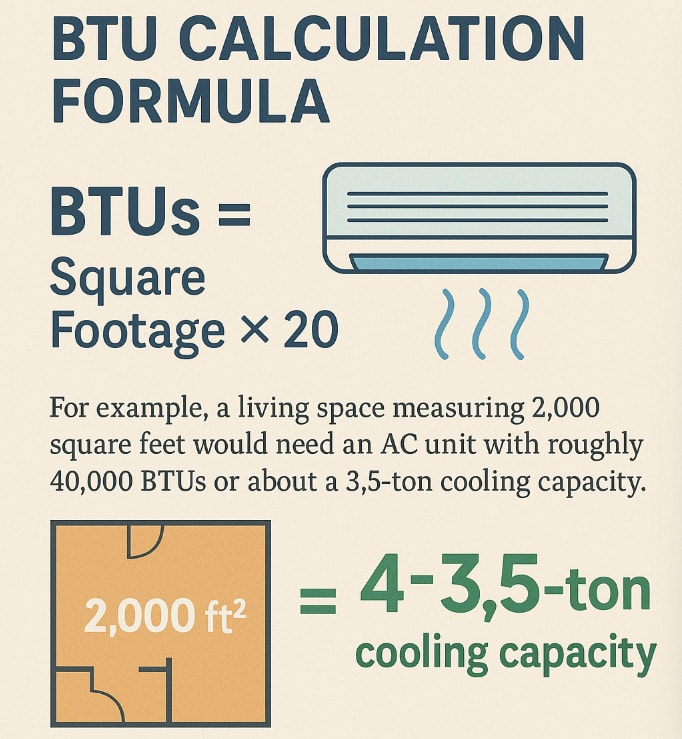
BTU Calculation Formula
British Thermal Units, or BTUs, indicate the quantity of heat an air conditioner can extract from an area, going beyond mere cooling power. Air conditioners’ capacity to cool is quantified in British thermal units (BTUs) or tons. To determine the necessary BTUs for a space, one should multiply its square footage by 20. Hence, a living space measuring 2,000 square feet would need an AC unit with roughly 40,000 BTUs or about a 3.5-ton cooling capacity.
For home air conditioning systems, the typical range spans from 18,000 to 60,000 BTUs. It’s important to comprehend this BTU rating when picking out the right size AC unit that will suit your household needs effectively.
Employing this formula based on British thermal units ensures that your chosen air conditioner delivers sufficient cooling without excess energy consumption or discomfort within your residence, achieving maximum efficiency and comfort as gauged by thermal units per hour.
Factors Influencing AC Unit Size
The size of an air conditioner is affected by various elements, such as:
- The level of insulation quality. Superior insulation leads to a reduced need for cooling capacity in an AC unit.
- The local weather conditions dictate the necessary strength of air conditioning. Warmer climates demand higher cooling capacities.
- Characteristics like the number and directionality of windows within a room can influence how much cool air is needed.
- How a room is laid out has implications on airflow patterns and may impact the effectiveness with which it’s cooled.
Grasping these variables enables you to find an appropriately sized air conditioner tailored to your space.
Aspects such as room configuration, ceiling height, and exposure to sunlight also play into determining how well-suited and efficient a particular size air conditioner will be. If one doesn’t get the size right, there could be negative outcomes including heightened humidity levels inside or inflated energy usage – both signs that the AC unit isn’t adequately matched with its environment.
By keeping these factors in mind when shopping for an AC unit, better choices can be made leading to ensuring your chosen model addresses specific requirements while optimizing performance.
Insulation and Sun Exposure
The performance of an air conditioner in maintaining the preferred indoor climate is highly influenced by the insulation quality of a home, which plays a crucial role in keeping the cool air inside. If a house receives an abundance of direct sunlight, it may require a more robust AC unit to counteract the additional warmth generated within.
By taking into account these elements, you can guarantee that your air conditioning system functions at its most efficient level, delivering comfort while avoiding unnecessary energy use. Enhancing insulation and mitigating sun exposure can lead to marked improvements in how well your AC unit operates, leading to lower energy bills and heightened comfort levels throughout your home.
Ceiling Height and Room Layout
The configuration of your home, particularly if you have an open floor plan, can influence the movement of air and subsequently determine the appropriate size for your AC unit. The ceiling height is a significant factor in determining the correct size of an air conditioner. Rooms with higher ceilings demand greater cooling capacity to achieve and sustain the desired temperature.
Taking into account these aspects regarding room size is crucial when choosing an air conditioning unit. Doing so enables it to cool the entire living space effectively while maintaining maximum comfort and energy efficiency.
Types of AC Units and Their Applications
There is a diverse array of air conditioners available to suit various applications and residential configurations. The predominant categories of home AC systems include traditional split-systems, ductless systems, and packaged air conditioners.
In the process of evaluating different AC units, it’s important to take into account aspects such as expense, necessary dimensions for your space, and other home-specific elements that could influence the unit’s efficiency. Comprehending the distinctions among these types will assist you in selecting an air conditioning system that is most appropriate for both your personal requirements and the characteristics of your living space.
Central Air Conditioning Systems
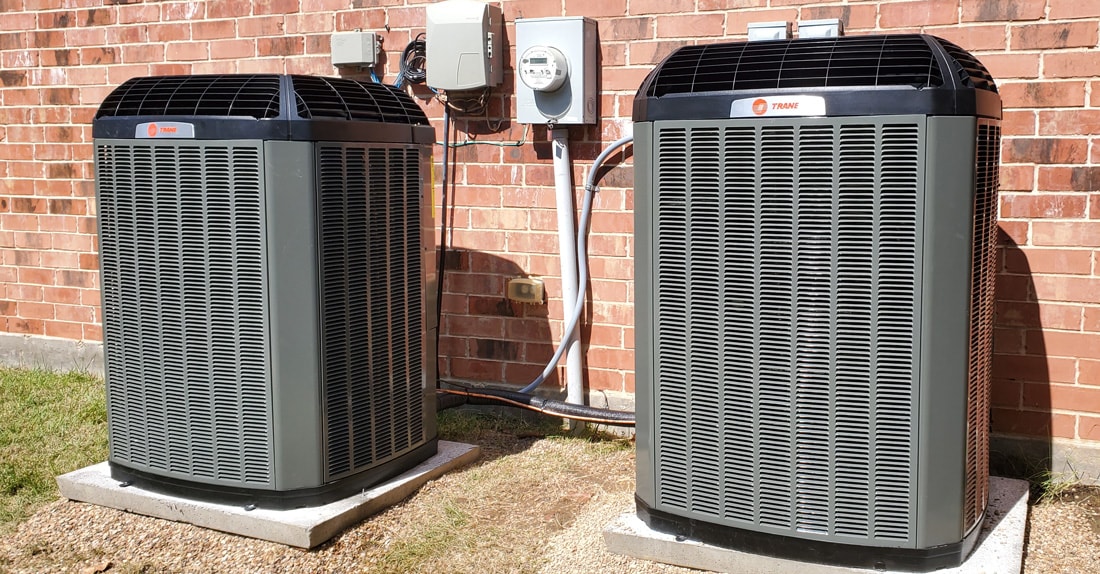
Central air conditioning systems are engineered to cool a whole house effectively. They deliver uniform cooling across the home, which is perfect for larger areas or when there’s existing ductwork in the home.
Usually, these setups involve a packaged system that features one single outdoor unit linked to several indoor units. This configuration guarantees an even distribution of cool air and maximum comfort throughout the living space.
Window Air Conditioners
Window air conditioners are ideal for cooling single rooms or smaller spaces due to their compact nature. They are installed in a window or specially-made wall opening, making them a cost-effective option for individual room cooling with a window unit, window units, and window ac.
However, they may not suit larger spaces or homes requiring consistent cooling throughout.
Ductless Mini-Split Systems

Systems without ductwork provide versatile installation choices, eliminating the need for intricate duct configurations. They allow for precise cooling to be directed where it’s needed, empowering homeowners to set specific temperatures in separate areas.
Mini-split systems that are ductless serve as contemporary options for both heating and cooling needs, perfectly suited for properties that lack pre-installed duct networks.
Energy Efficiency Ratings Explained

Energy efficiency ratings are crucial for judging air conditioning system performance. SEER ratings compare the energy efficiency of different air conditioning systems. Choosing an air conditioner with a higher SEER rating can lead to significant savings on energy bills.
Understanding energy efficiency ratings aids in making informed choices and contributes to maximum efficiency and long-term energy savings.
What is a SEER Rating?
SEER stands for Seasonal Energy Efficiency Ratio. A SEER rating measures efficiency by dividing cooling output by total energy used during an average cooling season. SEER2 is calculated by dividing the total cooling provided by the total electrical input during the cooling season. A higher SEER rating indicates greater cooling energy efficiency.
American Standard offers air conditioning systems with SEER ratings up to 22.
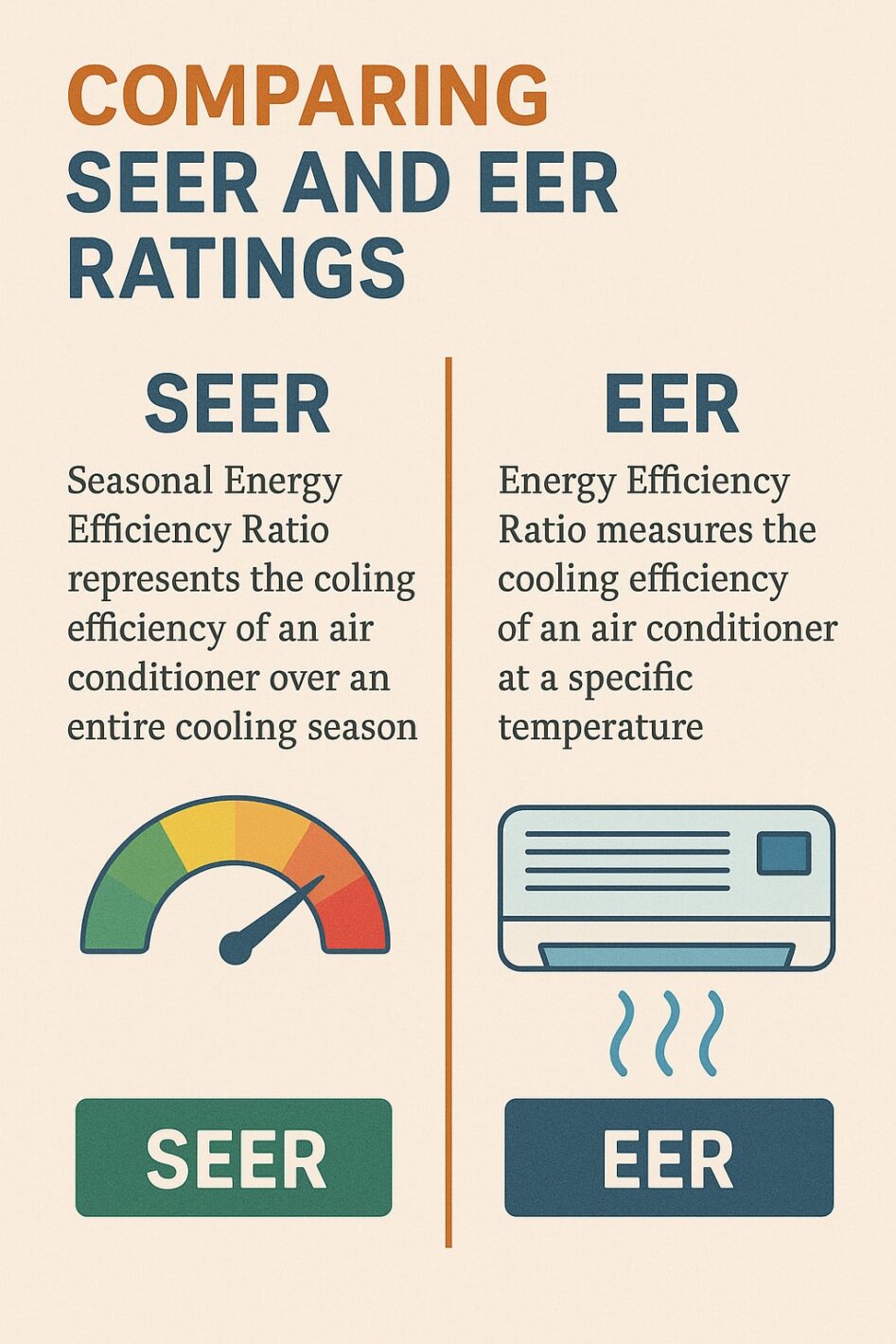
Comparing SEER and EER Ratings
In 2023, the SEER2 standard was introduced to provide more accurate measurements of energy efficiency by including external static pressure in its calculations. Air conditioning units with the Energy Star label signify a superior SEER2 rating and consume at least 8% less energy than models without certification.
The Seasonal Energy Efficiency Ratio (SEER) and Energy Efficiency Ratio (EER) serve as essential indicators for evaluating the energy efficiency of air conditioning systems.
Professional Assessment for Accurate Sizing
Consulting qualified HVAC professionals is essential for achieving optimal comfort and energy efficiency, as they can accurately size the air conditioning system according to a home’s unique requirements. Engaging their expertise ensures that the air conditioner is appropriately tailored to your needs.
To ascertain the correct size of an air conditioner needed for your residence, it is advisable to seek out an HVAC dealer who can conduct meticulous measurements and evaluations. These trained professionals employ advanced software designed for the precise calculation of sizing requirements.
Manual J Calculation
A Manual J calculation is carried out to accurately assess a home’s specific cooling requirements. It is imperative for homeowners to ensure that the contractor tasked with this inspection has valid licensing and proper certifications, as these qualifications are indicators of adherence to professional standards in the industry.
The square footage of your residence plays a critical role when determining the precise sizing requirements for central AC measured in square feet (sq ft).
Benefits of an Energy Audit
A comprehensive energy audit offers valuable information that assists in selecting the appropriate air conditioning unit size for a residence. It evaluates aspects such as insulation, air leaks, and the amount of energy used to pinpoint precise cooling requirements.
An energy auditor performs an energy audit, which enhances the general efficiency of your home’s use of power. This improvement can result in lower elevated costs associated with energy usage while simultaneously heightening comfort within your living area.
Choosing the Right Installation Company
It is crucial to select a trustworthy HVAC dealer with a strong track record of experience and integrity for the installation and consistent maintenance of your system. Verify that any potential contractors are fully licensed and insured according to local regulations, offering you peace of mind regarding legal compliance and security.
Inquire with your HVAC dealer about the appropriate size conditioner necessary for your air conditioning unit, as accurate sizing is vital for optimal performance.
Evaluating HVAC Contractors
Ask contractors for customer references and confirm their record in both installation and service work. Look into online reviews and feedback to assess the reliability of a contractor’s services. Do not make your decision on an HVAC contractor based solely on cost.
It is crucial to appraise HVAC contractors carefully to guarantee high-standard service and successful system implementation.
Getting Multiple Quotes
By obtaining a variety of estimates, you can scrutinize the diverse services and costs provided by several HVAC technicians, enabling a well-informed choice when purchasing. It is crucial to analyze these quotes to pinpoint service offerings that are competitively priced, ensuring the contractor selected aligns with both your financial constraints and requirements.
In reviewing these proposals, it’s important to look beyond just the cost. Assessing the caliber of service provision, warranty assurances, and the expertise level of contractors is essential. Securing multiple bids could lead to significant cost savings while affirming that you attain optimal value for your AC unit installation.
Summary
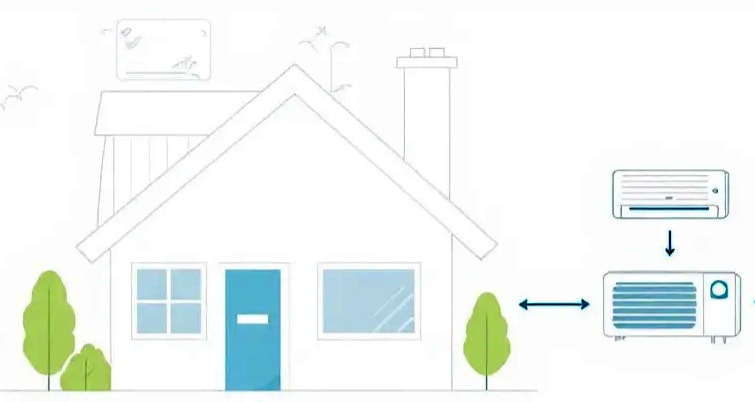
To summarize, choosing the appropriate size air conditioner is a complex task that necessitates knowledge of correct AC unit sizing, determining necessary BTUs, acknowledging different contributing factors, and selecting the appropriate kind of air conditioner. Precision in sizing for enhanced energy efficiency can be achieved through professional evaluations such as Manual J calculations and energy audits. Engaging a credible HVAC contractor and obtaining various estimates guarantees high-quality installation and peak functionality. Equipped with this insight, you are well-positioned to make a decision that will maintain your home’s comfort while managing your energy expenditures effectively.
Frequently Asked Questions
To determine the correct size air conditioner for your home, calculate your home’s square footage and multiply it by 20 to estimate the required BTUs.
For a more accurate assessment, it is advisable to consult with a professional.
If your air conditioner is too large, it will short cycle and create uneven cooling, while a unit that is too small will struggle to adequately cool the space.
Both scenarios lead to increased energy costs and excessive wear on the system.
The SEER rating is an indicator of how energy efficient an air conditioner is throughout the cooling season, with a higher number indicating superior efficiency. This can result in lower electricity bills and decreased ecological footprint.
Hence, it’s crucial to choose an air conditioner that has a high SEER rating to ensure both economic savings and environmental responsibility.
An energy audit is essential before installing an AC unit as it identifies insulation issues and air leaks, allowing you to tailor your cooling system to your specific needs and enhance overall energy efficiency.
Choosing the right HVAC contractor involves evaluating customer references, online reviews, and their experience.
It is also prudent to obtain multiple quotes to effectively compare services and prices.